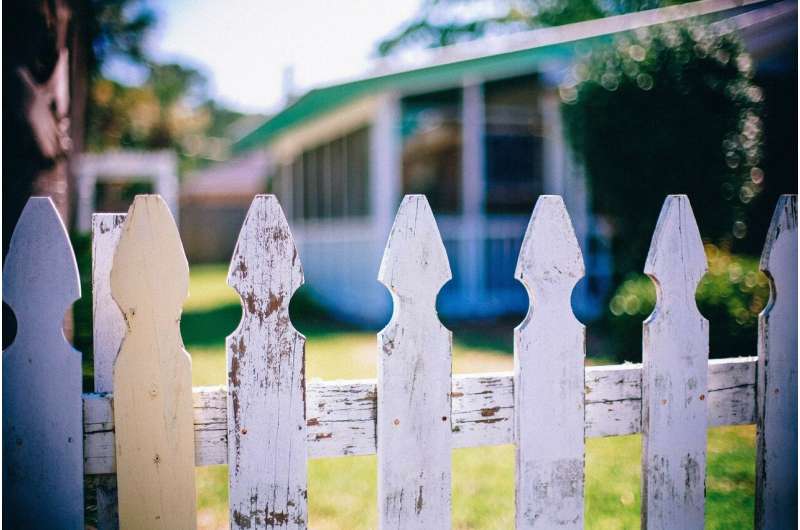Neighbors looking out for one another can lessen child abuse and neglect

Parents are less likely to neglect or abuse their children when they have supportive networks within their neighborhood and others on whom they can rely, a new University of Michigan study found.
Neighborhood poverty is associated with increased risk for child abuse and neglect, but these relationships are driven, in part, by the impact neighborhood poverty has on the interactions between residents. Without the resources to increase the bonds among neighbors, some parents find it difficult to cope with stress, which hinders their ability to care for their children.
Researchers examined how social cohesion and informal social control impacted neighborhood behaviors regarding physical and psychological abuse on children at age 5. Social control relates to the willingness of neighbors to intervene if they witness a problematic situation, while social cohesion relates to the trust and bonds between neighbors.
The findings indicate that social control is associated with decreased child neglect, which suggests that neighbors who are able to intervene may reduce the likelihood of a child being unsupervised or not having their basic needs met.
Kathryn Maguire-Jack, U-M associate professor of social work and the study's lead author, said social cohesion is associated with decreased abusive behaviors toward children, highlighting the importance of supportive networks in neighborhoods.
"These findings may be driven through decreased stress parents experience or through normalizing the stresses and difficulties associated with parenting. It can be comforting to know that you are not alone and that others are going through the same," she said.
Maguire-Jack and colleagues used data from nearly 4,900 children in the Fragile Families and Child Wellbeing Study, which sampled 20 large, urban cities throughout the United States. The questions involve child physical assault, psychological aggression and neglect within the last year, as well as family background and neighborhood dynamics
Since neighborhood poverty—or the number of households in an area that resides below the minimum standard of living—is associated with lower social control, it is possible that the lack of resources within the neighborhood may hinder neighbors' ability to intervene in such situations or to be able to connect with their neighbors, Maguire-Jack said.
This all suggests that multifaceted efforts are needed to prevent child maltreatment, including, critically, increasing individual and neighborhood resources but also community-level interventions to strengthen bonds between neighbors and the ability for parents to help each other.
The study's co-authors were Susan Yoon, assistant professor of social work at Ohio State University, and Sunghyun Hong, U-M doctoral student of social work and psychology.
The findings appear in the journal Child Maltreatment.
More information: Kathryn Maguire-Jack et al. Social Cohesion and Informal Social Control as Mediators Between Neighborhood Poverty and Child Maltreatment, Child Maltreatment (2021). DOI: 10.1177/10775595211007566
Provided by University of Michigan





















